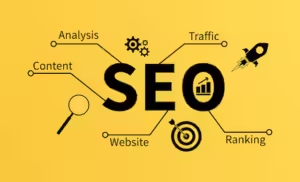Facebook Ads are paid advertisements that appear on Facebook and its associated platforms, including Instagram, Messenger, and the Audience Network. These ads can be displayed in various formats, such as image ads, video ads, carousel ads (multiple images or videos in a single ad), and more. The platform allows businesses to target specific audiences based on a range of criteria, making it a versatile tool for driving brand awareness, engagement, and conversions.
Key Components of Facebook Ads
- Ad Objectives: Before creating an ad, you need to define its objective. Facebook offers various objectives based on your marketing goals, including brand awareness, lead generation, website traffic, conversions, and app installs. Your choice of objective will guide the ad creation process and optimize the ad for your desired outcome.
- Targeting Options: One of the most powerful features of Facebook Ads is its targeting capabilities. Advertisers can reach their ideal audience using:
- Demographics: Age, gender, education, and job title.
- Interests: Hobbies, favorite activities, and interests.
- Behaviors: Purchasing behavior, device usage, and travel habits.
- Custom Audiences: Upload lists of contacts or target users who have interacted with your business before.
- Lookalike Audiences: Reach new users similar to your existing customers.
- Ad Formats: Facebook Ads come in various formats, including:
- Image Ads: Simple and effective, these ads use a single image to convey your message.
- Video Ads: Engage users with compelling video content.
- Carousel Ads: Showcase multiple images or videos that users can swipe through.
- Slideshow Ads: Create video-like ads using a series of images.
- Collection Ads: Provide a full-screen experience featuring a cover image or video and several product images.
- Ad Placement: Facebook Ads can appear in several places, such as the News Feed, right column, Marketplace, and Stories on Facebook and Instagram. You can choose where your ads will be displayed or let Facebook automatically place them where they are likely to perform best.
- Budget and Bidding: Set a budget for your ad campaign, which can be either daily or lifetime. Choose a bidding strategy based on your goals, such as cost-per-click (CPC) or cost-per-impression (CPM). Facebook’s ad auction system ensures that you get the most value for your money based on your bid and ad quality.
- Analytics and Reporting: Facebook provides detailed analytics on ad performance, including metrics like reach, engagement, clicks, and conversions. These insights allow you to measure the effectiveness of your ads and make data-driven decisions for future campaigns.
Benefits of Facebook Ads
- Precise Targeting: Facebook’s robust targeting options enable businesses to reach their ideal audience with precision. This ensures that your ads are seen by users who are most likely to be interested in your products or services.
- Cost-Effective: With flexible budgeting and bidding options, Facebook Ads can be tailored to fit various budgets. The platform’s auction system helps you achieve a good return on investment (ROI) by optimizing ad spend.
- Wide Reach: Facebook’s vast user base offers an extensive reach, allowing businesses to connect with a large and diverse audience.
- Enhanced Engagement: Facebook Ads can drive higher engagement through interactive formats and personalized content, fostering a deeper connection with your audience.
- Scalability: Whether you’re a small business or a large corporation, Facebook Ads can scale to meet your needs. You can start with a modest budget and gradually increase it as you see positive results.
Getting Started with Facebook Ads
- Create a Facebook Business Account: Set up a Facebook Business Page and a Business Manager account to manage your ads effectively.
- Define Your Objectives: Clearly outline your goals for the ad campaign to choose the appropriate ad objectives.
- Design Your Ads: Create compelling ad content that resonates with your target audience. Use high-quality images or videos and craft engaging copy.
- Set Your Budget: Determine your budget and bidding strategy based on your goals and available resources.
- Monitor and Optimize: Regularly review your ad performance using Facebook’s analytics tools. Make adjustments to improve results, such as tweaking your targeting, ad creative, or bidding strategy.
Conclusion
Facebook Ads offer a dynamic and effective way to reach and engage with your target audience. By leveraging Facebook’s extensive targeting capabilities and diverse ad formats, businesses can drive meaningful results and achieve their marketing goals. With careful planning, creative execution, and ongoing optimization, Facebook Ads can be a powerful addition to your digital marketing strategy.
4o mini


